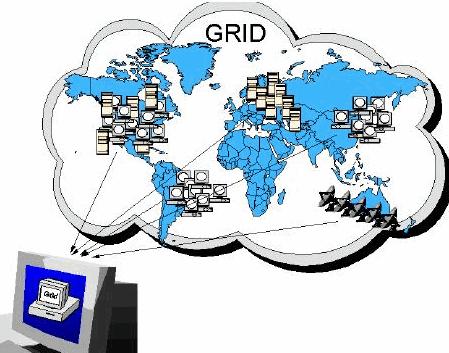Researchers using the World Community Grid, supported by IBM, achieved a breakthrough in the automation and acceleration of the complex manual process that allows identifying the structure of proteins associated with cancer - on the way to developing new drugs and treatments

The global computing community, established with the assistance of IBM, unites hundreds of thousands of users of personal computers connected to the Internet who donate the free processing resources of their computers in order to perform various tasks in the fields of research, during hours when they are not required for the day-to-day work.
Today, 1.5 million personal computers are connected to the system, in 80 countries, creating a system equal in power to one of the most powerful supercomputers in the world.
IBM's global community computing system enabled the cancer researchers working as part of the "Help Conquer Cancer" project to build a system that accurately identifies the moment when protein samples undergo solidification and crystallization processes (crystallization) - and are ready for further tests using X-rays . The process is required for the identification and research of the structure, shapes and the manner of interaction and combination of certain proteins in the process of cancer formation.
The researchers using the system trained it to successfully identify 80% of the crystal images and through these images 98% of the protein solutions in their state prior to the crystallization process. Thus, a six times greater number of images of each protein can be examined, compared to tests done by humans and in a shorter time frame.
An automatic process of crystal identification may speed up the research processes in a number of fields in the world of biology and genetics, as well as in the study of protein structures.
A scientific paper presenting the new breakthrough is published this week in the Journal of Structural and Functional Genomics.
Crystallization allows X-rays to bombard samples of proteins and illuminate them in different directions, in order to build a three-dimensional model of the protein, which enables a more convenient study of its properties. However, the crystallization processes of proteins are an exhausting and long matter. Each protein sample may require thousands of crystallization attempts, by exposing it to chemicals, by a robot. Until today, observation by a human eye was required after each such attempt, in order to check if the required crystallization was indeed achieved.
X-ray crystallography plays a central role in a variety of scientific research areas. Thus, for example, this method was used to understand the structure of DNA. Aside from proteins, this technology is also used to study materials such as metals, minerals and semiconductors.
Since cancer research began using IBM's global community computing system about 3 years ago, computer users who put their surplus computing resources at the service of the community have contributed 50,981 processor years and an average of 54 computing years per work day. The global community computing system currently offers researchers in various fields a processing power of 180 trillion mathematical operations per second (180 tera-flops) - of which about 80 tera-flops are allocated to cancer research.
Other projects that are ongoing at the same time include the identification of materials that are candidates for the development of new drugs, the development of drugs for AIDS, the development of new varieties of rice that will yield larger crops and be more resistant to diseases and pests, and research in the field of muscle and nervous system diseases.
IBM contributed the central systems, the software for managing the network as well as the expertise to establish the infrastructure for the huge global network. Now IBM hosts the servers and contributes the maintenance and technical support.
Computer users can donate their unused processing power on Windows, Mac or Linux systems.
More details about cancer research with the help of the worldwide network

4 תגובות
Is it just me or do WCG do more calculable feats than FAH?
I'm with Erez from comment 2.
I hereby call on the universities in Israel to take up the gauntlet and make use of this technology.
I am interested in donating my labs for Israeli research!
In the end, it is not written which study and what the breakthrough was.